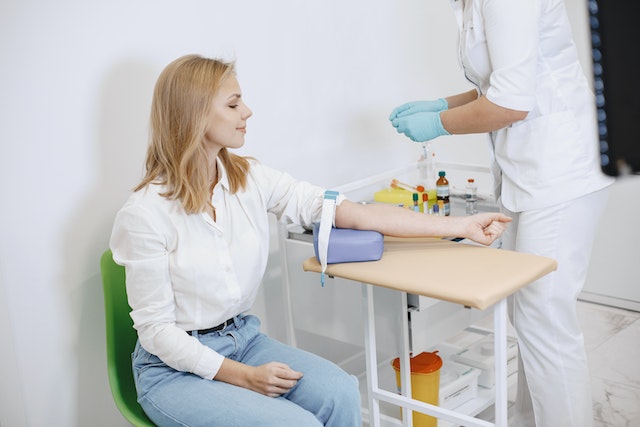There are several types of postural orthostatic tachycardia syndrome (POTS). It is critical to understand the distinction between these because treatment options will vary depending on the type of POTS a patient is diagnosed with. The most common types of POTS are neuropathic POTS, Volume Dysregulation, Mast Cell Activation Disorder, Autoimmunity, hyperadrenergic POTS, and Secondary POTS. Let us discuss these POTS subtypes in greater detail. To start us off, we shall highlight what POTS is, those at risk of getting it, its symptoms, and so much more!
What Exactly is Postural Orthostatic Tachycardia Syndrome (POTS)?
POTS (postural orthostatic tachycardia syndrome) is one of several conditions characterized by orthostatic intolerance (OI), which occurs when a patient experiences symptoms of low blood volume while standing. They however get relieved when they lie down. The heart muscle is in charge of blood circulation throughout the body. When the heart does not function properly, blood may not flow normally throughout the body. POTS can also be caused by an additional condition of Chronic diabetes mellitus. Since it is caused by an external factor, it is known as Secondary POTS.
Who is At Risk of Getting POTS?
The majority are women aged between 13 to 50 years old. Approximately 1 to 3 million people suffer from POTS in the United States.
What Are the Symptoms of POTS?
Some common POTS symptoms are:
- A heart rate that goes beyond 120 beats per minute within 10 minutes of standing.
- A rapid increase in the heartbeat characterized by more than 30 beats per minute
- Dizziness
- Fainting
- Fatigue
Diagnosis and Tests
The physician will usually begin the diagnosis of POTS by taking a medical history and performing a physical exam. A tilt table study may be performed during the physical exam to evaluate the heart and blood pressure when the body changes positions. A diagnosis can usually be made by physicians based on the tilt table test and the patient’s symptoms.
Sometimes, the doctor will order additional tests to rule out other conditions. These diagnostic tests may include an examination of the heart muscle, blood flow through the heart, and any unusual electrical impulses. An electrocardiogram (EKG) refers to a painless procedure that provides a picture of the heart’s electrical activity and how it works.
An echocardiogram is another diagnostic tool that could be used. This non-invasive procedure employs a machine known as a transducer, which transmits sound waves and bounces them off the heart before returning to the transducer. After that, the echoes are translated into visual images. Electrophysiology studies can be used to examine the heart’s electrical system.
The Different Subtypes of POTS As Per Research.
Several subtypes of POTS have been found and include neuropathic POTS, autoimmunity, hyperadrenergic POTS, mast cell activation disorder, and volume dysregulation. These subtypes are not mutually exclusive or clearly independent. They include:
- Neuropathic POTS
Neuropathic is the most common and it’s referred to as nerve disease. The sympathetic nerves, which supply the vessels in the lower limbs, are responsible for stimulating the vessels to tighten and squeeze blood back up to the heart when needed, such as when standing. Since the sympathetic nerve supply to the lower limbs does not function properly in POTS syndrome, blood pools in the lower extremities rather than being returned to the heart. This causes standing dizziness, known as orthostasis, and an increase in heart rate, known as tachycardia.
- Hyperadrenergic POTS
Hyperadrenergic refers to a high level of adrenaline. Adrenaline and nor-adrenaline i.e. epinephrine and nor-epinephrine, are natural stimulants that are released in the body during the flight or fight response. Patients with hyperadrenergic POTS have high levels of nor-epinephrine in their blood. As you might expect, this would result in an increase in heart rate and blood pressure. Standing blood pressure and heart rate are lower in the more common neuropathic form of POTS, but standing blood pressure and heart rate are frequently elevated in hyperadrenergic POTS.
- Secondary POTS
Secondary POTS is defined as POTS syndrome that develops due to another underlying condition that causes nerve damage that controls blood redistribution. Diabetes, lupus, alcoholism, and chemotherapy are among the conditions that can usually lead to secondary POTS. A screening to eliminate secondary causes is usually performed as part of the POTS workup.
- Volume Dysregulation
It has been observed that some POTS patients have persistently low plasma volumes. This suggests that the renin-angiotensin-aldosterone system is malfunctioning. Others have abnormally low plasma renin activity and aldosterone levels, resulting in insufficient renal sodium retention. Secondary hypovolemic states can occur in POTS patients with GI dysmotility disorders due to excessive fluid loss from diarrhea or poor volume and electrolyte intake due to chronic nausea.
- Mast Cell Activation Disorder
Mast cell activation disorder (MCAD) is characterized by the inappropriate release of histamine and other mast cell mediators in response to physical activity or orthostatic stress, which can result in orthostatic tachycardia. Mast Cell Activation Disorder patients experience flushing, shortness of breath, headache, lightheadedness, excessive diuresis, and GI symptoms such as abdominal pain, vomiting, diarrhea, nausea, and so on. Episodes are triggered by prolonged standing and exercise but can also happen before menstruation, during meals, and during sexual intercourse.
- Autoimmunity
Stress, viral illness, and the occasional association of POTS with a personal or family history of systemic autoimmune disorders such as Sjogren’s syndrome can all cause autoimmunity. In some of these cases, orthostatic intolerance may be a side effect of a systemic autoimmune disease or be associated with the presence of peripheral autonomic neuropathy (i.e., the neuropathic subtype of POTS).
Takeaway.
POTS (postural orthostatic tachycardia syndrome) is one of several conditions characterized by orthostatic intolerance (OI). However, many other symptoms appear in people with different subtypes of POTS. Our article describes the POTS condition, as well as its various subtypes and associated symptoms. Use the insight to learn more about the symptoms you’ve been experiencing and consult a doctor to confirm a diagnosis.


